





Medical axon
Application instruction:
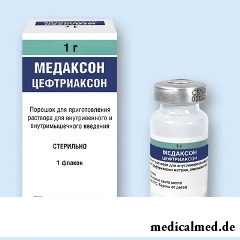 Medical axon – tsefalosporinovy antibacterial drug III of generation.
Medical axon – tsefalosporinovy antibacterial drug III of generation.
Form of release and structure
Dosage form – powder for preparation of solution for intravenous and intramuscular administration: slightly hydroscopic, from color, white to white with a yellowish shade (in bottles, 1 or 100 bottles in a box cardboard).
Active agent: цефтриаксон (in the form of sodium salt), in 1 bottle – 0,5 or 1 g.
Indications to use
Medical axon – drug for treatment of the infectious and inflammatory diseases caused by microorganisms, susceptible to a tseftriakson:
- Infections of ENT organs;
- Respiratory infections (including pneumonia);
- Infections of urinary tract and kidneys;
- Infections of skin and soft tissues;
- Infections of generative organs (including gonorrhea);
- Infections of joints and bones;
- Infections of an abdominal cavity (inflammatory diseases of digestive tract, biliary tract, peritonitis).
Besides, drug is used for treatment of meningitis, sepsis and infections at patients with reduced immunity, and also for prevention of infectious complications in the postoperative period.
Contraindications
- I trimester of pregnancy;
- Hypersensitivity to components of drug or other cephalosporins, and also penicillin.
With care:
- Hyperbilirubinemia of newborns;
- Prematurity;
- Liver/renal failure;
- Nonspecific ulcer colitis;
- The colitis and enteritis connected using antibiotics;
- Pregnancy (II-III trimester);
- Lactation period.
Route of administration and dosage
From powder prepare solution which enter intravenously (in/in) or intramusculary (in oil).
Rules of preparation and administration of solutions:
- Intravenous infusion: 2 g of drug part 40 ml of solution, free from calcium, for example, in solution of 0,9% of sodium of chloride, 5% or 10% of a dextrose, 5% of fructose. Pour in/in a minimum within 30 minutes;
- Intravenous injection: 1 g of powder part 10 ml of the sterile distilled water. Enter slowly in/in within 2-4 minutes;
- Intramuscular introduction: 1 g of a tseftriakson part 3,5 ml of 1% of solution of lidocaine. Enter deeply into a gluteus. Intravenous administration of drug with lidocaine is forbidden!
The recommended doses:
- Adults and teenagers are more senior than 12 years: 1-2 g of 1 times a day (with 24-hour intervals). At the serious conditions and infections caused by moderately sensitive microbes, the dose can be increased to 4 g;
- Children up to 12 years with body weight more than 50 kg: doses, as for adults;
- Babies (2 weeks are more senior) and children up to 12 years with body weight less than 50 kg: 0,02-0,075 g/kg a day (at the same time a daily dose more than 0,05 g/kg it is necessary to enter intravenously a minimum within 30 minutes);
- Newborn children aged up to 2 weeks: 0,02-0,05 g/kg of 1 times a day.
Duration of therapy is defined individually depending on a look and character of a course of a disease.
At gonorrhea (including if it is caused by the strains forming a penicillinase) appoint 0,25 in oil once.
Treatment of bacterial meningitis at children (newborns including) there begin with a dose 0,1 g/kg of 1 times a day, but no more than 4 g/days. Further the dose is adjusted as soon as the pathogen is revealed and its sensitivity to a tseftriakson is defined.
Therapy duration depending on activator type:
- Enterobacteriaceae (enterobakteriya) – 10-14 days;
- Streptococcus pneumoniae (pneumococcus) – 7 days;
- Haemophilus influenzae (Afanasyev-Pfeyffera's stick) – 6 days;
- Neisseria meningitidis (менингококк) – 4 days.
For the prevention of infections in the postoperative period Medakson enter once in a dose 1-2 g in 30-90 minutes prior to carrying out the infected or presumably infected surgical intervention.
The patient with the expressed renal failure (if the clearance of creatinine does not exceed a mark of 10 ml/minute) drug is appointed in a dose by no more than 2 g/days.
Side effects
- Local reactions: morbidity on the vein course, phlebitis, morbidity and infiltrate in the place in oil of introduction;
- Allergic reactions: fever/fever, rash, skin itch, small tortoiseshell; in rare instances – an eosinophilia, a serum disease, a bronchospasm, a Quincke's edema, a mnogoformny exudative erythema, an acute anaphylaxis;
- Alimentary system: diarrhea/lock, nausea, vomiting, taste disturbance, abdominal pains, meteorism, inflammation of language and mucous membrane of an oral cavity, pseudomembranous coloenteritis, dysbacteriosis, abnormal liver function (increase in activity of hepatic transaminases; seldom – an intra hepatic cholestasia, increase in level of bilirubin or an alkaline phosphatase);
- System of a hemopoiesis: granulocytopenia, thrombocytosis, neutropenia, thrombocytopenia, leukopenia, lengthening of a prothrombin time, decrease in concentration of plasma factors of coagulation (II, VII, IX, X), hypocoagulation, lymphopenia, hemolitic anemia;
- Central nervous system: headache, вертиго;
- Urinary system: an anury, an oliguria, the renal failure which is shown increase in content of urea in blood, a cylindruria, a giperkreatininemiya, an azotemia, a hamaturia, a glucosuria;
- Others: candidiasis, nasal bleeding, superinfection.
Special instructions
It is necessary to monitorirovat constantly concentration of a tseftriakson in blood at the patients with a heavy renal and liver failure and also who are on a hemodialysis.
At prolonged treatment systematic control of a condition of peripheral blood, function of kidneys and a liver is necessary.
In rare instances at ultrasound examination of a gall bladder blackouts come to light. This side effect independently passes after the termination of administration of drug. Even continuation of therapy by Medakson along with simultaneous performing symptomatic therapy is recommended to patients at whom this phenomenon is followed by pains in right hypochondrium.
Development of an acute anaphylaxis is the most serious indication to performing the emergency therapy meaning intravenous administration first of all of Epinephrinum then – glucocorticoids.
Vitamin K co-administration can be required by the weakened patients and elderly people.
During therapy it is contraindicated to take alcoholic beverages since there is a probability of development of disulfiramopodobny effects, such as an asthma, a lowering of arterial pressure, face reddening, head pain, nausea, vomiting, tachycardia, a spasm in a stomach.
Medicinal interaction
At Medakson's use the risk of formation of bleeding increases in a combination with non-steroidal anti-inflammatory drugs and other inhibitors of aggregation of thrombocytes.
At combined use with loopback diuretics or any other drugs which are capable to have toxic effect on a liver the probability of development of nephrotoxicity increases.
Tseftriakson is incompatible with the ethanol and solutions containing other antibiotics. It is impossible to mix it with other antibacterial agents in one syringe / bottle.
At use of a tseftriakson along with aminoglycosides a synergism at impact on many gram-negative bacteria is observed. In most cases it is recommended to appoint them separately, however in hard cases and at life-threatening infections (for example, caused by a pyocyanic stick) their combined use is proved.
Terms and storage conditions
To store in the dry, dark place unavailable to children, at a temperature up to 25 ºС.
Period of validity – 2 years.
In operating time our brain spends the amount of energy equal to the 10 Watts bulb. So the image of a bulb over the head at the time of emergence of an interesting thought is not so far from the truth.

Transfusion of donor blood has almost century history. In spite of the fact that this procedure is quite usual for many people, itself п...
Section: Articles about health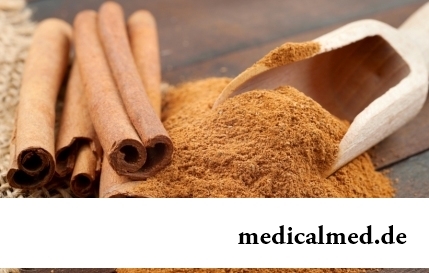
Ayurveda - the most ancient tselitelsky practice which came to us from India. It represents the doctrine about maintenance of physical, psychological and moral health of the person by means of the complex of procedures including a diet, cleaning of an organism, respiratory упр...
Section: Articles about health
The winter swimming in open reservoirs called in our country by "winter swimming" – officially recognized sport and one of the most extreme ways of a hardening of an organism. This occupation has an old story and adherents in many countries. The international competitions in winter heats on open water, and every two years – the World Cup are annually held. Despite huge popularity and the proved advantage for health, winter swimming is still surrounded with hardy delusions. Ра...
Section: Articles about health
Residents of big cities quite often have a disease which is known as the syndrome of chronic fatigue (SCF) today. This illness...
Section: Articles about health
(Xerostomia) many people consider feeling of a xerostomia small and easily removable inconvenience. This delusion: the symptom can demonstrate existence of serious diseases. It is worth to remember also that saliva performs important functions...
Section: Articles about health
The sclera and mucous membrane of an eye are intensively supplied with blood vessels which problem - to saturate nervous tissues of body with nutrients and oxygen. In a normality vessels are almost not noticeable, however at their expansion (owing to thinning of walls) become visible, painting a sclera in red color. Quite often red eyes - the signal of any trouble in an organism caused as external irritants, allergens, and diseases which need in about...
Section: Articles about health
Weakness of an ankle joint – very widespread problem. Its existence is demonstrated by tendency to a podvorachivaniye of legs п...
Section: Articles about health
Osteoporosis this general disease which main sign is decrease in density of a bone tissue. On distribution width it takes the fourth place among noninfectious diseases. The illness develops at mature age more often: in our country to them harvest seasons...
Section: Articles about health
During foot walks blood moves on vessels more actively and one and all bodies are supplied with a large amount of oxygen. It affects the state of health of the person very positively....
Section: Slideshow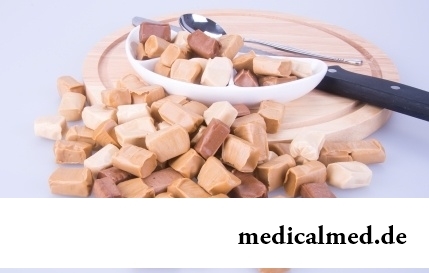
Food with the increased content of sugar is attractive to most of people - it is scientifically confirmed fact. Business here not in a nevozder...
Section: Articles about health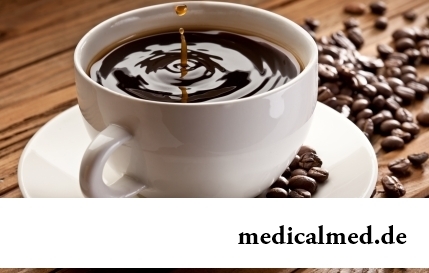
Coffee – favourite drink of many. For the last decades it more than once already declared very harmful, extremely useful and even necessary for normal life activity. In spite of the fact that this product became for us usual for a long time, exists much...
Section: Articles about health
All are familiar with cold, and practically everyone believes that he has sufficient knowledge and experience that correctly to treat it. In practice most of people makes mistakes in attempts to get rid of rhinitis, and divides numerous delusions it....
Section: Articles about health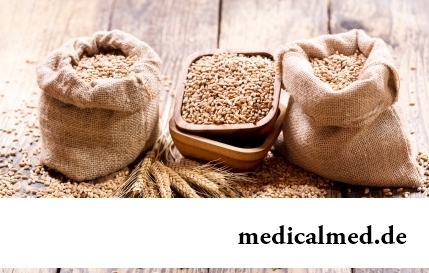
The concept "gluten" (differently, a gluten) combines group of the proteins which are a part of rye, barley and wheat. For most of people упот...
Section: Articles about health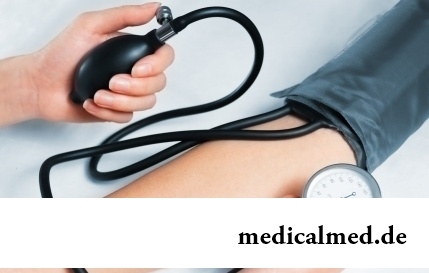
Stroke (acute disorder of cerebral circulation) – one of the most widespread neurologic diseases. Annually in the world more than 6 million people die of this illness. From the survived patients about 80% become disabled people, and nearly a thirds from them впо...
Section: Articles about health
Frosty air, fresh wind and easy snowball at most of Russians are associated with cheerfulness, health and cheerful entertainments on which our winter is so generous. But, unfortunately, cold season sometimes brings also troubles with health. It is not about seasonal colds and frostbites, and about those chronic illnesses which symptoms are shown preferential in the winter....
Section: Articles about health
Each person supports all life a SARS about 200 times. The peak of incidence falls on cold season, but to get sick from temperatures...
Section: Articles about health
Hemorrhoids – extremely widespread disease. Periodically arising inflammations and bleeding of hemorrhoidal nodes cause serious discomfort to nearly fifteen percent of adults. Meanwhile, having a clear idea of the aggravation reasons...
Section: Articles about health
The number of long-livers is very small. One person from 5 thousand lives up to age of 90 years, and the centenary boundary steps over only one of 20 thousand. However, doctors claim that each of us is quite able to affect own destiny. At the same time it is not so much about living as long as possible, how many about an opportunity to keep physical and intellectual activity and to avoid decrepitude. We will also talk about the ways helping to achieve this result today....
Section: Articles about health
New year, wedding, birthday, office party – an occasion to drink at the Russian person will always be. How to reduce a negative impact...
Section: Articles about health
Smack in a mouth can arise in the natural way – as a result of lack of morning hygiene or reception of the corresponding food. However in certain cases its existence is a sign of certain pathologies, and allows to reveal an illness at an early stage. In we depend...
Section: Articles about health
What is in our understanding weeds? It plants which are considered to be suitable only for compost pits and feeding of animals. Meanwhile, among the weeds growing literally under legs it is possible to find the mass of the officinal herbs having invaluable advantage for human health. It is possible not only to be treated by most of them, using as broths, tinctures, compresses, but also to accept in food as usual products. Let's consider 8 widespread and often ignored by people...
Section: Articles about health
The summer of this year in Russia was very ambiguous. Regions suffered from a merciless heat, from pouring rains, from times...
Section: Articles about health
Olive oil – the product capable to make a powerful contribution to health of the person if it includes it in the diet. The rich vitamin composition of oil does it by a product number one from many diseases including from deadly. Only two tablespoons...
Section: Articles about health
Summer in the heat. Many are going to spend vacation abroad. Travelers the tender seas, rest on beaches wait, for sightseeing, campaigns on natural and cultural reserves. But, unfortunately, on vacation also problems with health can wait for us. On a foreign trip it is possible to face also diseases which not only will spoil long-awaited issue, but also will force to be treated within long months after its termination. To be insured completely from troubles of it a sort...
Section: Articles about health
Maternal milk is the best food for the newborn. It is the unique natural product containing optimum set...
Section: Articles about health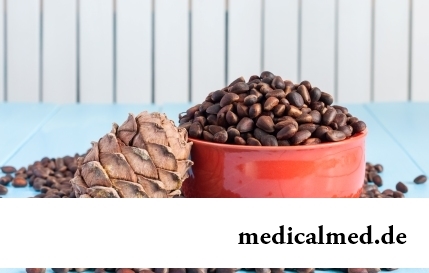
The hysteromyoma is diagnosed more than at a third of women 35 years are more senior. This high-quality new growth which at early stages successfully resolves by means of medicines. It is necessary to resort to an operative measure only in those a case...
Section: Articles about health
Sometimes it seems that modern society was divided into two camps: representatives of the first are sure that only the woman has to be responsible for contraception, representatives of the second, respectively, are sure that it is destiny of men. Meanwhile the question of contraception has very many aspects – both psychological, and legal and, of course, medical....
Section: Articles about health
